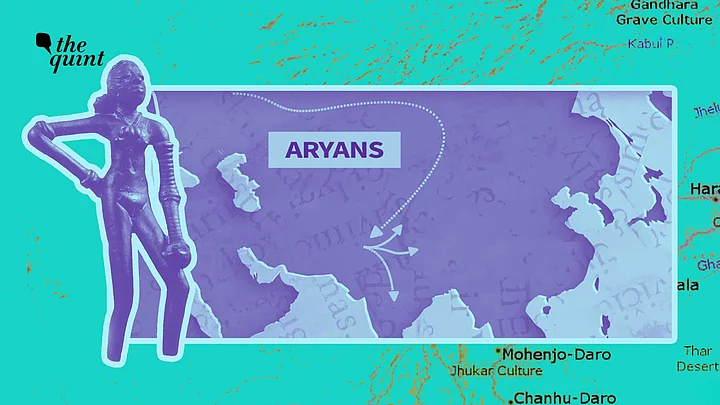(A 12-page calendar released by the Indian Institute of Technology (IIT), Kharagpur, that presents itself as a rebuttal to the ‘Aryan Invasion myth’ has become the focus of a controversy.
The Quint asked Tony Joseph, author of ‘Early Indians: The Story of Our Ancestors and Where We Came From' for his take on the calendar. The following is his response.)
“The only place where the 'Aryan Invasion Theory' has existed for about half a century is in the imagination of polemicists. And they keep it alive because it is good to have a handy strawman to bring out whenever the need arises. It is surprising to see IIT Kharagpur giving them company in this endeavour.
Believe Peer-Reviewed Studies, Not Calendar Art
What exists in the real world is strong, multi-disciplinary evidence for the ‘migration’ of Central Asian Steppe pastoralists into the Indian subcontinent between 2000 and 1500 BCE.
For instance, the 2019 genetic study titled "The Formation of Human Populations in South and Central Asia" had this to say in its Conclusion: "Earlier work recorded massive population movement from the Steppe into Europe early in the 3rd millennium BCE, likely spreading Indo-European languages. We reveal a parallel series of events leading to the spread of Steppe ancestry to South Asia, thereby documenting movements of people that were likely conduits for the spread of Indo-European languages." This study, co-authored by 117 scientists, including from India, was based on ancient DNA from 837 people who once lived in Central Asia, Iran, Afghanistan and South Asia.
Another 2019 study, authored by 28 scientists from around the world, based on the ancient DNA of a woman who lived in the Harappan city of Rakhigarhi around 2600 BCE, arrived at the same conclusion. It said: "However, a natural route for Indo-European languages to have spread into south Asia is from Eastern Europe via central Asia in the first half of the second millennium BCE, a chain of transmission that did occur as has been documented in detail with ancient DNA."
Both these studies powerfully confirmed existing understandings. So, it would be accurate to say that there is robust scientific consensus today about the migration of Steppe pastoralists from Central Asia into the Indian subcontinent, who brought Indo-European languages to the region.
They arrived after the Harappan Civilisation (which in its mature form had existed for around 700 years) began declining due to a long drought. Therefore, the statements that the calendar makes are without basis. This is not surprising, because new scientific discoveries are brought to the attention of the world through peer-reviewed studies published in journals of high standing, not through calendar art.
Modern India is a Result of Mass Migrations
But why do Right-wing polemicists want to deny the scientific consensus about the migration of Steppe pastoralists that brought Indo-European languages to India? It is because of the wrong assumption that the Indian Civilisation is synonymous with the Arya/Vedic/Sanskrit culture. But this is an incorrect understanding.
While the Arya/Vedic/Sanskrit culture is a very important component of the Indian civilisation, it is not the only component or the earliest one.
The remarkable and unique Harappan Civilisation, the largest civilisation of its time (as big as the Mesopotamian and Egyptian civilisations put together both in terms of area and in terms of people), precedes the arrival of the ‘Arya’ by far. And when their civilisation began declining, the Harappans moved eastwards into north India and southwards into South India, thus becoming the ancestors of both north Indians and south Indians both culturally and genetically.
All modern human populations today are the result of multiple mass migrations that happened in prehistory. So there is nothing terribly surprising about the fact that the Indian population, too, is the result of multiple mass migrations that happened millennia ago, as revealed by science. That’s how all populations get made.
Also, to say that the Indo-European language speakers came from the Steppe 4,000 to 3,500 years ago is not to say that they brought the Vedas with them.
The Vedas were mostly composed in the Indian subcontinent, as is evident from the fact that the oldest Sanskrit we know, Rgvedic Sanskrit, already bears the imprint of its interaction with pre-Aryan languages in the Indian subcontinent. It is fascinating, the story that science tells!
(Tony Joseph is a writer and is on Twitter @tjoseph0010. This is an opinion piece and the views expressed above are the author’s own. The Quint neither endorses nor is responsible for the same.)
